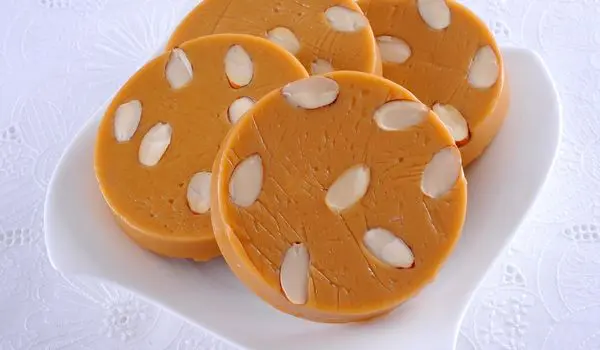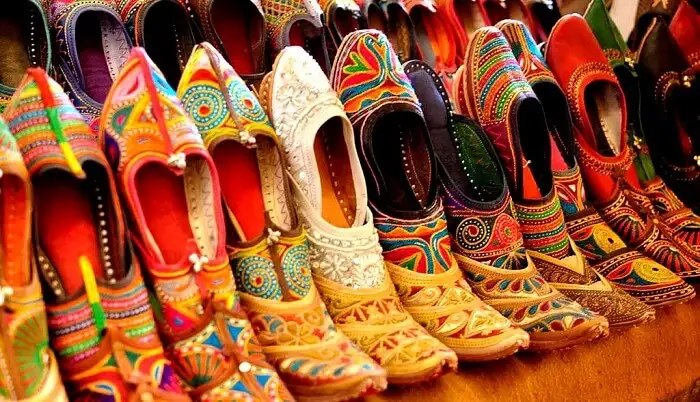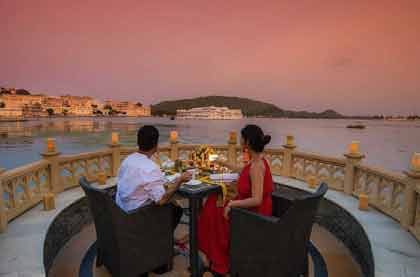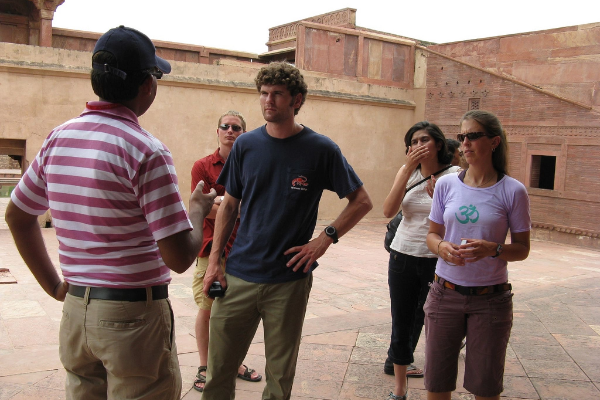
ATTRACTIONS & PLACES TO VISIT AND EXPLORE IN AJMER
Ajmer is a vibrant city that is just 14 kilometres from Pushkar, a town known for its pilgrimage, and 130 kilometres southwest of Jaipur. The word “Ajay Meru,” which loosely translates to “invincible hill,” gives the city of Ajmer its name. Ajmer, which is home to a multitude of tourist attractions, is an ideal example of the diversity of Indian culture and ethics and showcases how well different religions, communities, and cultures can survive and thrive together.
Ajmer remains a popular tourist attraction, in addition to being a pilgrimage centre for both Hindus and Muslims. The final resting place of the Sufi Saint, Khwaja Moinuddin Hasan Chisti, is visited by Muslims from all over the world; in fact, the Dargah is revered equally by both Hindus and Muslims. The city is surrounded by the expansive lake of Ana Sagar and the rugged hills of Aravalli. Although Ajmer Sharif Dargah, the shrine of Khwaja Muin-ud-din Chishti, remains as the most famous tourist places to visit in Ajmer, the city is also significantly known for the Jain religion and is home to an amazing golden Jain Temple. Ajmer is also a well-known learning centre.

THE AJMER SHARIF DARGAH
This is a Sufi shrine which encloses the ‘maqbara’ (grave) of Garib Nawaz, the Sufi saint Khwaja Moinuddin Chisti. Built in the 13th century, the shrine is popular among people of all faiths who flock here to have their prayers answered.

ADHAI DIN KA JHONPDA
Adhai Din Ka Jhonpda was first constructed as a Sanskrit college, but Sultan Ghori subsequently transformed it into a mosque in 1198 AD. The edifice, an exceptional example of Indo-Islamic architecture.

SONIJI KI NASIYAN
The Soniji ki Nasiyan, popularly known as the Ajmer Jain Temple, honours Risabh or Adinath and is a superb example of elaborate building. It has a red stone entryway and a marble stairway within that is inlaid with carvings of the saintly Tirthankars,

KISHANGARH FORT
This is a Sufi shrine which encloses the ‘maqbara’ (grave) of Garib Nawaz, the Sufi saint Khwaja Moinuddin Chisti. Built in the 13th century, the shrine is popular among people of all faiths who flock here to have their prayers answered.

GATEWAY OF TARAGARH FORT
Gateway of Taragarh Fort is the imposing main gate of Taragarh fort which is built on a crest of a hill. The main gateway of the Taragarh, which consists of two colossal bastions on both sides with strong guard rooms, has sculptures of elephants adorning.

ANASAGAR BARADARI
The white marble pavilions present on the south eastern embankment of the beautiful Ana Sagar Lake in Ajmer are called as Anasagar Baradari. It is a Mughal structure that’s wrapped around water bodies in a garden-like setting.

PRITHVI RAJ SMARAK
Prithvi Raj Smarak is a memorial made in the honour of the brave Rajput chief, Prithvi Raj Chauhan III. Regarded as the epitome of devotion and courage, he was the last ruler of the Chauhan lineage and was enthroned to rule over.

7 WONDERS PARK
7 Wonders Park, as the name suggests, houses the replicas of 7 famous monuments of the world – Eiffel Tower (France), Taj Mahal (India), Statue of Liberty (USA), Pyramid of Giza (Egypt), The Christ Redeemer (Brazil), Colosseum (Italy), Leaning Tower of Pisa (Italy).
Things To Do

FOOD
Sohan Halwa is a solid sweet. This traditional Indian confection is made with dried fruits mixed with mawa and sugar, milk, and wheat flour. The delicacy is often seasoned with dry fruits like Almonds, pistachios, cardamom, and saffron.

SHOPPING
If you are an expert bargainer then the place is just an absolute one. The people can buy for embroidered clothes among which the dupattas, lehengas, bangles, shoes, potteries, lac jewelry and many more.

ENTERTAINMENT
One of the most popular reasons to visit Pushkar is to go on a Jeep Safari, an exciting way to cruise through the deserts and see the beauty of Pushkar while travelling through the wildlife, dunes, and deserts of Jaisalmer and taking in the views.
Best of Ajmer
THE AJMER SHARIF DARGAH
This is a Sufi shrine which encloses the ‘maqbara’ (grave) of Garib Nawaz, the Sufi saint Khwaja Moinuddin Chisti. Built in the 13th century, the shrine is popular among people of all faiths who flock here to have their prayers answered. The shrine has three gates – the main gate or the Nizam gate, the Shah Jahan gate erected by the Mughal Emperor and the Buland Darwaza. Another big draw at this holy shrine is the sacred and scrumptious food that is served to devotees. Cooked in giant cauldrons known as ‘degs’, devotees gather in throngs to be blessed by this prasad.
ATTRACTIONS & PLACES TO VISIT AND EXPLORE IN AJMER
Best of Ajmer
ADHAI DIN KA JHONPDA
Adhai Din Ka Jhonpda was first constructed as a Sanskrit college, but Sultan Ghori subsequently transformed it into a mosque in 1198 AD. The edifice, an exceptional example of Indo-Islamic architecture, was subsequently embellished by Sultan Iltutmish in 1213 AD. According to legend, the mosque was the site of a two-and-a-half-day fair held during Urs in the 18th century, which is why it is known as Adhai din ka Jhonpda (literally, The Hut of Two and a Half Days).
Best of Ajmer
ADHAI DIN KA JHONPDA
Adhai Din Ka Jhonpda was first constructed as
a Sanskrit college, but Sultan Ghori
subsequently transformed it into a mosque in
1198 AD. The edifice, an exceptional example
of Indo-Islamic architecture, was subsequently
embellished by Sultan Ilfutmish in 1213 AD.
According fo legend, the mosque was the site
of a two-and-a-half-day fair held during Urs in
the 18th century, which is why it is known as
Adhai din ka Jhonpda (literally, The Hut of Two
and a Half Days).
Best of Ajmer
SONIJI KI NASIYAN
The Soniji ki Nasiyan, popularly known as the Ajmer Jain Temple, honours Risabh or Adinath and is a superb example of elaborate building. It has a red stone entryway and a marble stairway within that is inlaid with carvings of the saintly Tirthankars, omniscient Jain masters who propagated morality. This temple, built in the late 19th century, is one of India’s wealthiest temples. Swarna Nagari, the main room, is appropriately titled the “City of Gold” since it has several wooden figurines that have been gold-plated. In his book “Jainism: A Pictorial Guide to the Religion of Non-Violence,” Kurt Titze makes reference to this renowned architectural masterpiece.
Best of Ajmer
KISHANGARH FORT
In Kishangarh, Rajasthan, there is a stunning fort called Kishangarh Fort. When one visits the fort, they will find prisons, granaries, armies, and other key structures there. The largest building there is called the Durbar Hall, and it was where the monarchs held daily formal sessions. The Phool Mahal, which is decorated with exquisite paintings and frescoes, is without a doubt the fort’s most beautiful location. It brilliantly displays the splendour of the Rathore clan’s monarchs. Several lakes, including Gundu Lav Talab and Hamir Sagar, are close to the fort and make wonderful picnic spots. if you wish to go back in time.
Best of Ajmer
KISHANGARH FORT
In Kishangarh, Rajasthan, there is a
stunning fort called Kishangarh Fort.
When one visits the fort, they will find
prisons, granaries, armies, and other key
structures there. The largest building there
is called the Durbar Hall, and it was where
the monarchs held daily formal sessions.
The Phool Mahal, which is decorated with
exquisite paintings and frescoes, is
without a doubt the fort’s most beautiful
location. It brilliantly displays the
splendour of the Rathore clan’s monarchs.
Several lakes, including Gundu Lav Talab
and Hamir Sagar, are close to the fort and
make wonderful picnic spots. if you wish
to go back in time.
Best of Ajmer
AJMER GOVERNMENT MUSEUM
One of the most popular tourist attractions in Ajmer is the government museum. The museum is located inside the opulent fortified palace of the fabled Mughal Emperor Akbar, which was constructed in 1570. The museum, also called the Bharatpur Museum, houses a substantial collection of artefacts from antiquity.
Best of Ajmer
VICTORIA CLOCK TOWER
Ajmer is a city that has seen major influence from the British in its past. The British left their legacy in many forms in Ajmer, some of which are in the form of educational institutions and architectural buildings in the city. While a couple of these buildings are located in the heart of Ajmer, one that immediately catches the eye of the visitor is the Victoria Jubilee Clock Tower. Located just opposite the railway station in Ajmer,
For Bookings Of Travel Packages, Car Rental & Luxury Hotels.
HOW TO GET HERE?

Airplan
Kishangarh Airport at Kishangarh, 20 Km. from Ajmer is well connected by air with some of the major cities in India.

Train
Ajmer is connected by rail with several major cities in India including Agra, Chittorgarh, Delhi, Jaipur etc.

Road
Ajmeris well connected by road with various cities, towns and tourist destinations in the country.




